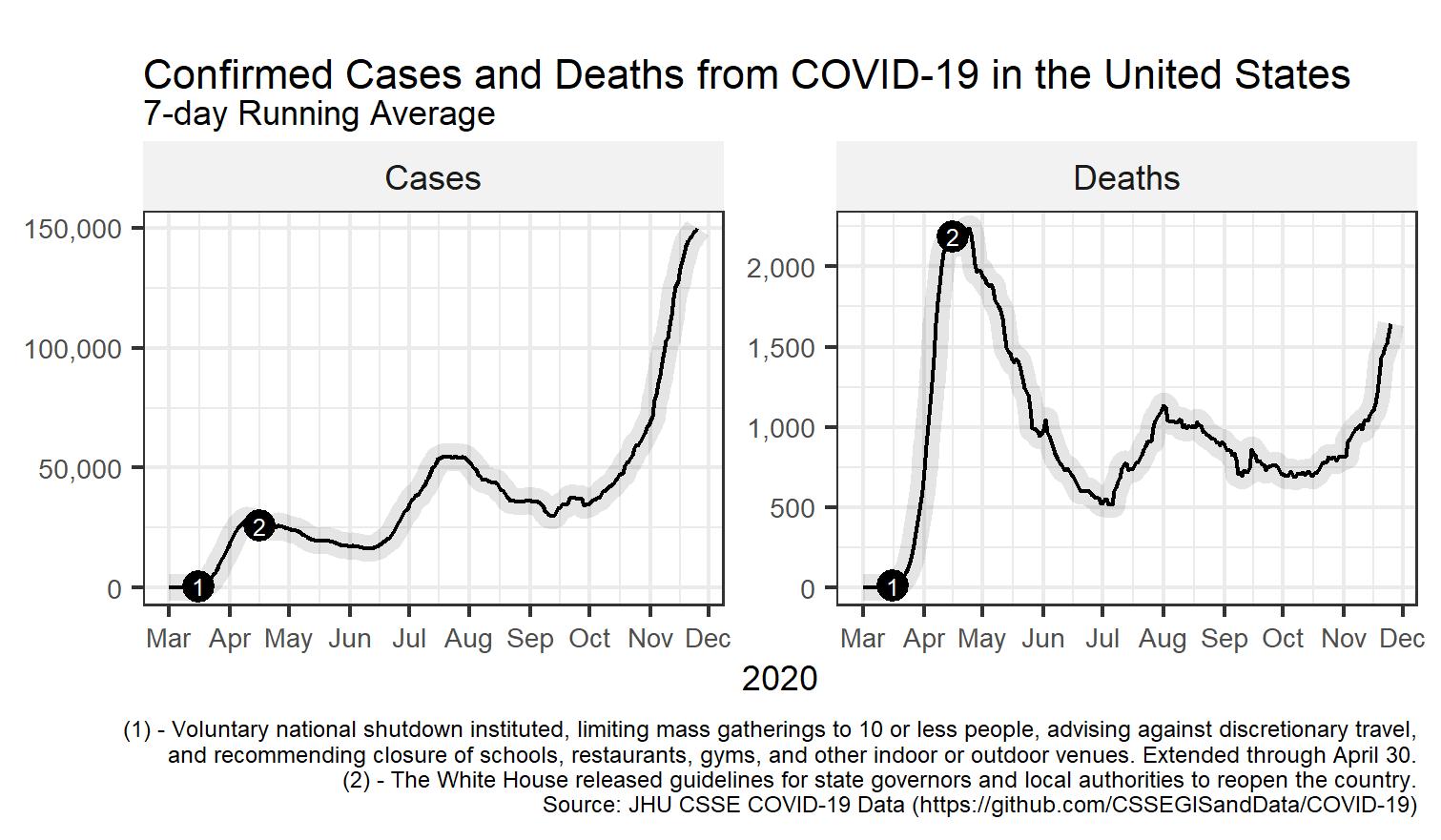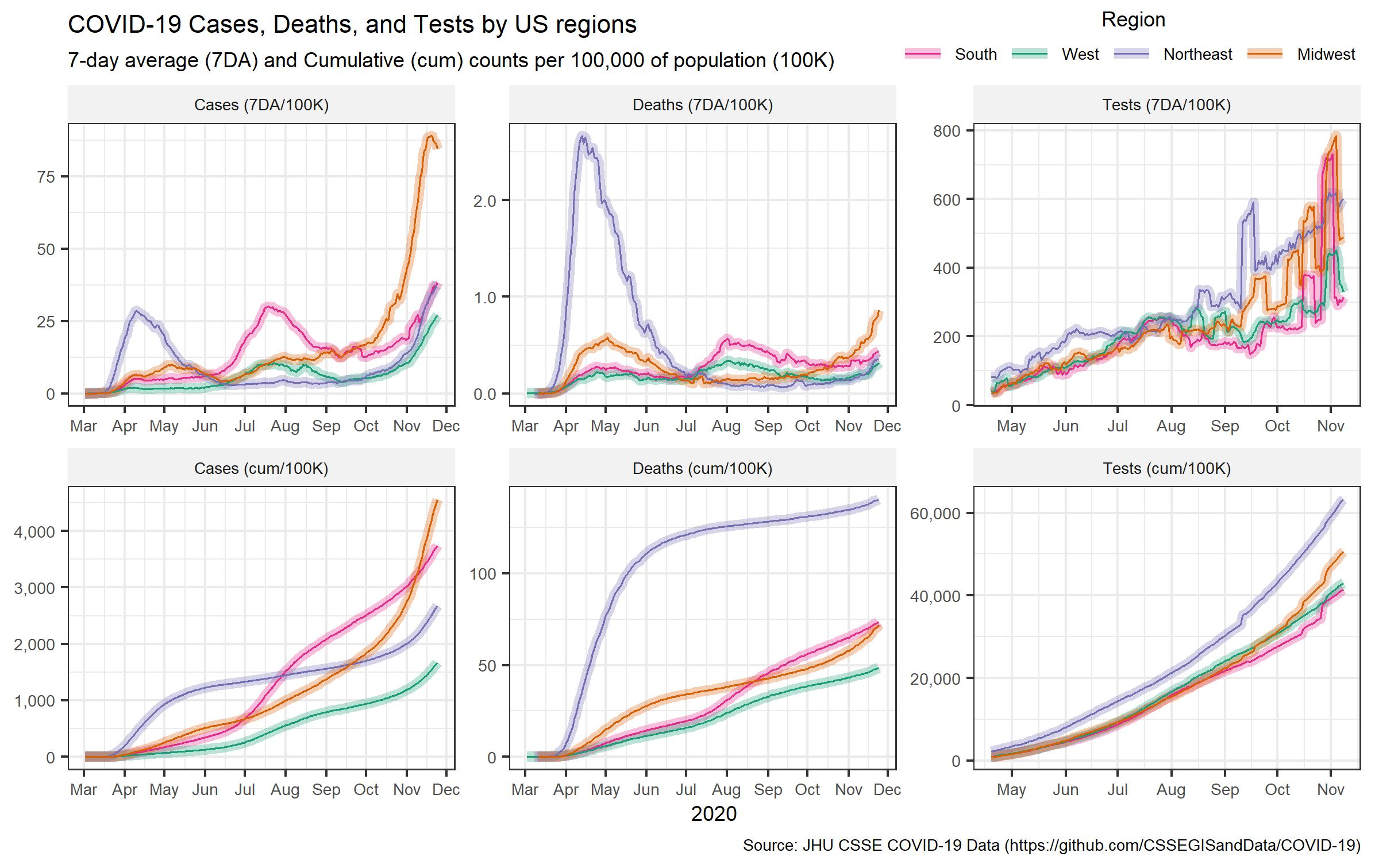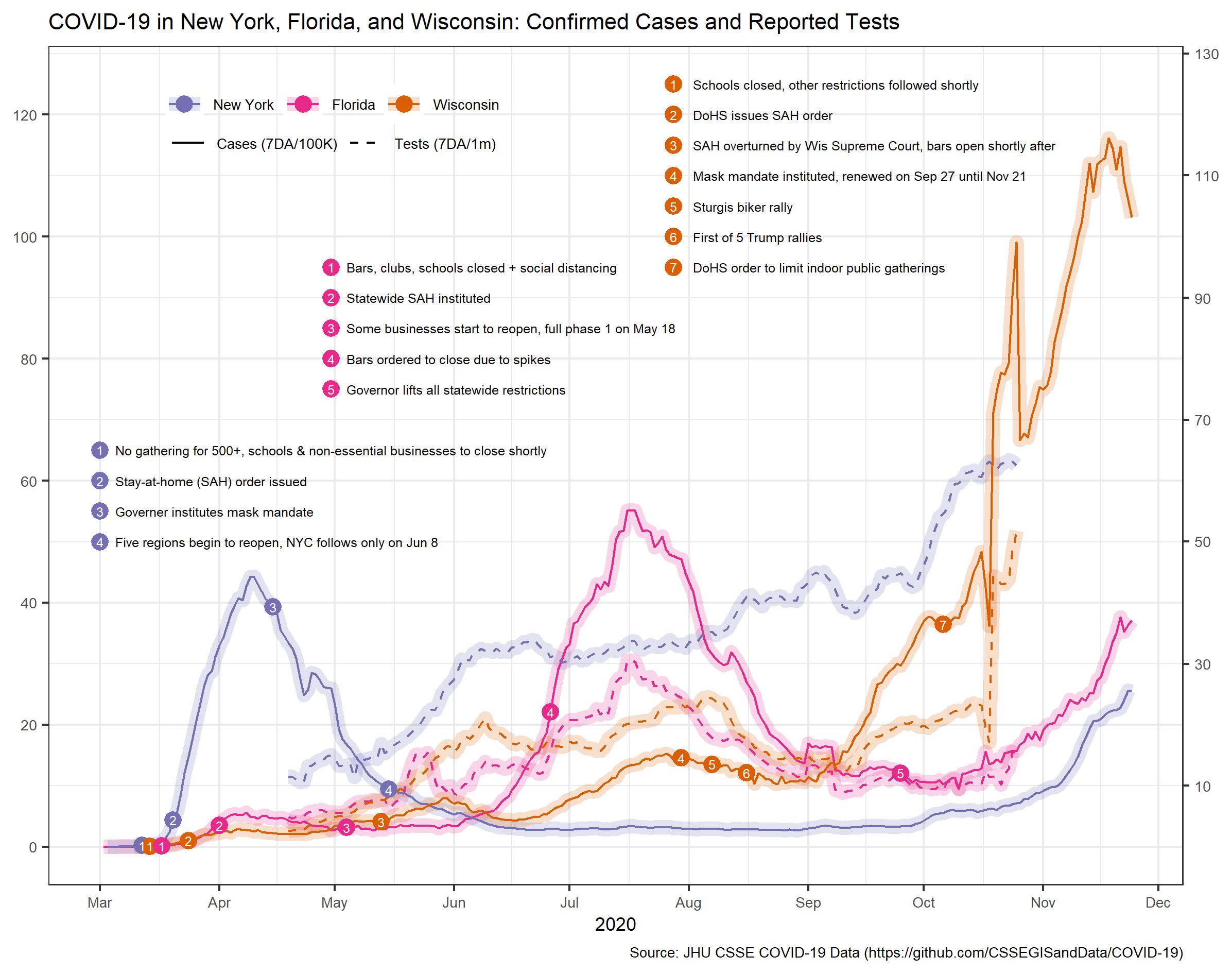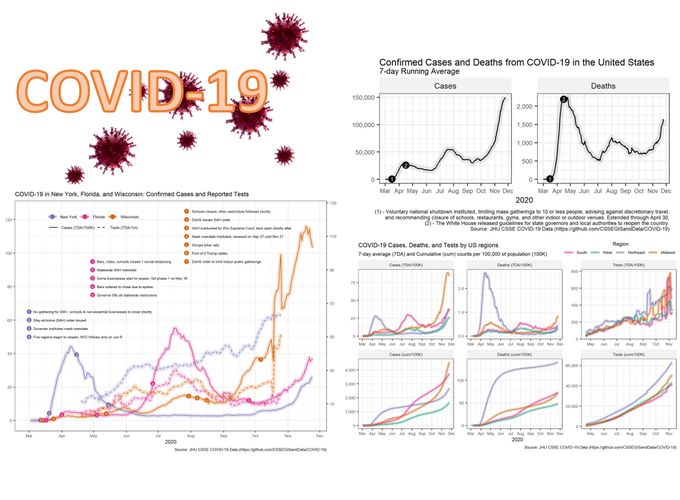Abstract
Focusing on the states of New York, Wisconsin, and Florida, the paper tracks the unfloding of COVID-19 in the United States and reflects on the governmental response to the pademic
Type
Publication
Health Economics, Policy and Law
Figures



Reflections on US response
- Initial containment measures (shutting borders, locking down) were delayed and were not mandated nationally.
- Testing got off to a slow start, never reached consistent sufficient capacity, and testing times remained too long, thereby impeding contact tracing.
- Initial physical and human resources were insufficient for a pandemic response and there were challenges building them up
- National leadership abdicated, and leadership fell to the states.
- Some states may have reopened too early and quickly.
- Noncompliance with mandates/guidelines may also have contributed to all three surges.
- Lack of entitlements to care may have affected access to testing, treatment and outcomes.
- The Trump Administration marginalised public health and scientific leaders, and contradicted and interfered with scientific guidelines and advice.
- The healthcare workforce was not protected
- Containment measures were politicised, and behaviour had a partisan basis.
